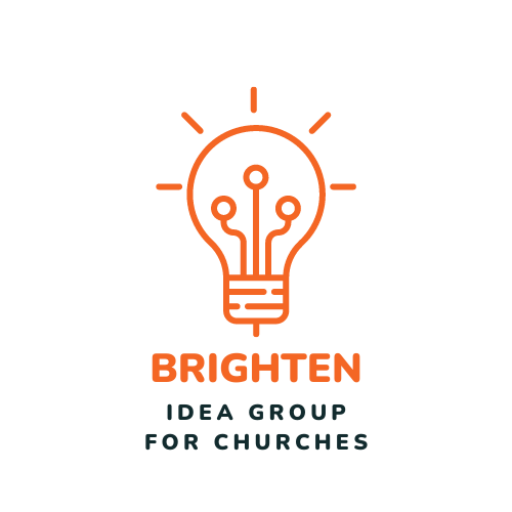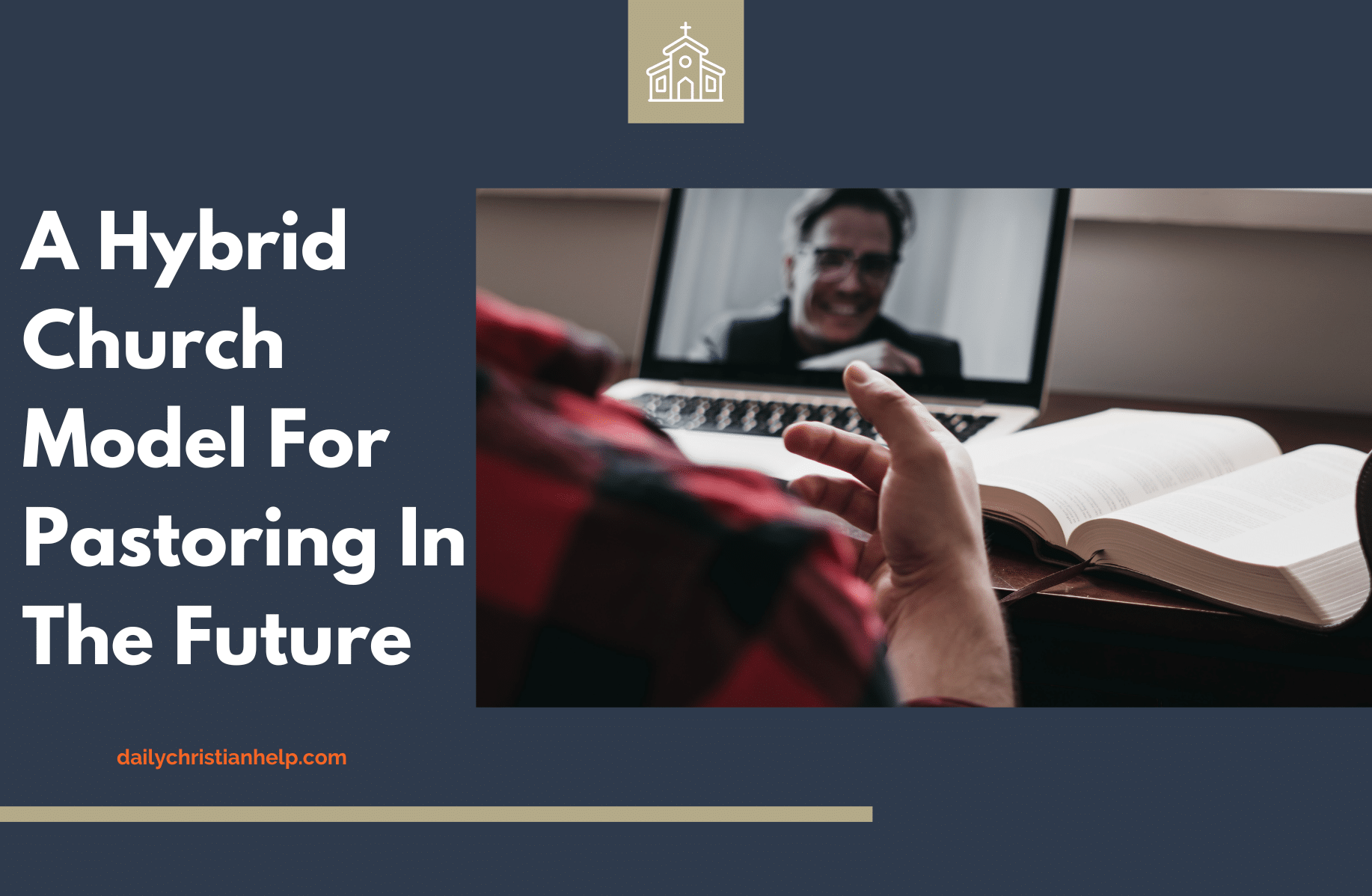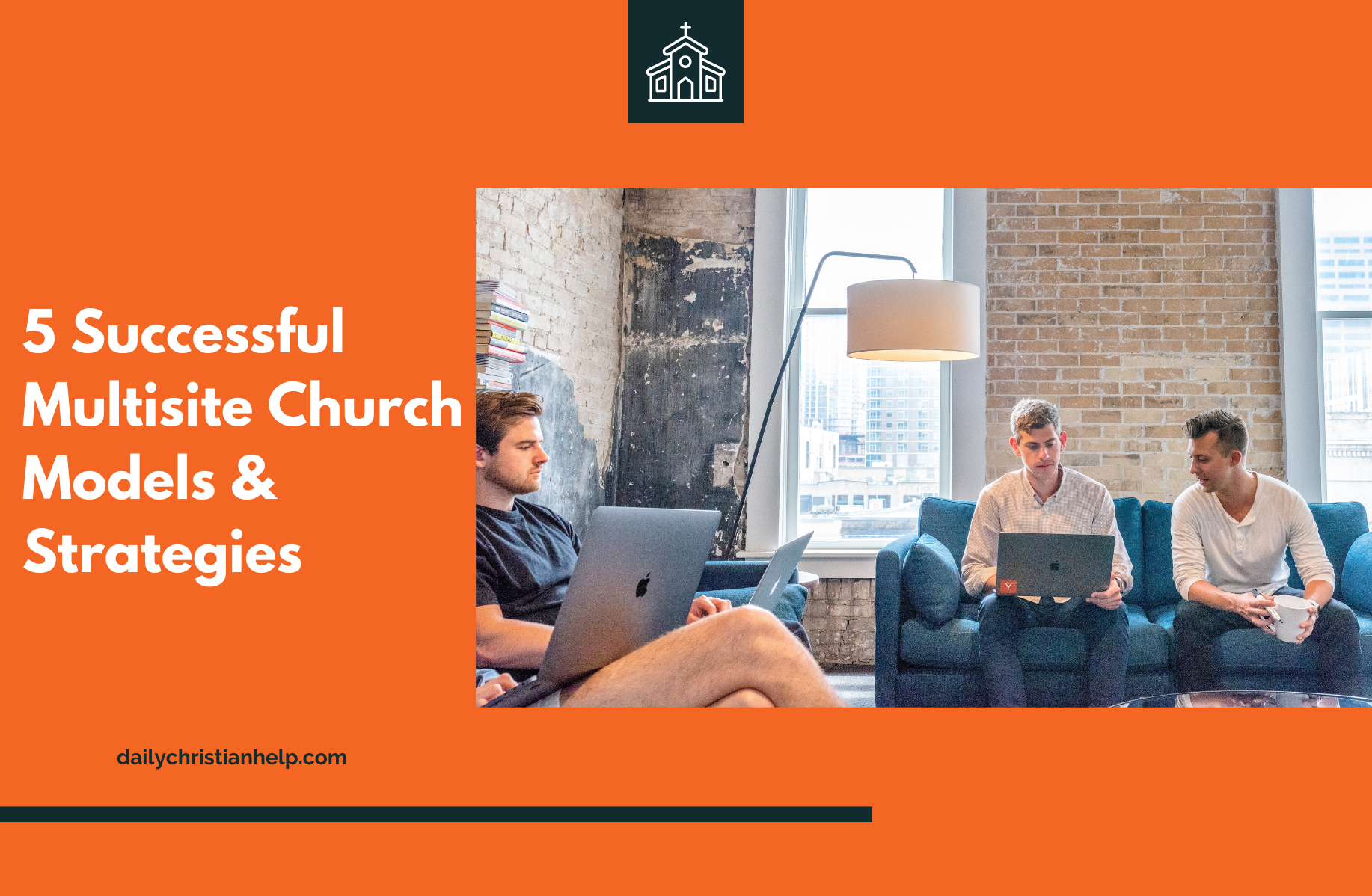Hybrid church models are growing in popularity and possibility because of the unique access that we now have to blend concepts like time, location, large gatherings, and small gatherings.
Often this is thought about strictly in terms of, do you have an in-person gathering and a service online too? However, at this point, this is antiquated thinking. There is far too much opportunity for the work of the church to flow seamlessly between aspects of life that were previously limited by factors of size, time and place.
What’s Different About The World Compared To Previous Years
It’s no secret that during and following Covid-19, people’s ability to connect and expectations around how it happens shifted. Several elements led to this shift and continue influencing how people think about life.
Faster Adoption Of Digital Technology
Once widespread understanding of how easy it is to meet across platforms like Zoom to connect and work, the stigma of meeting online drastically softened.
Digital Is Not New To Young People; It’s Normal
Millennials, Gen Z, and the generations to follow are digital natives. They have grown up with smartphones, social media, and instant access to information, making digital communication a natural and integral part of their lives.
Paradox Is Easier To Embrace
A glance across the landscape of American churches, and you will find churches embracing what many have held as polar opposites. It’s not uncommon to see churches blend liturgy and preaching, stain glass and modernity, charisma and bible teaching. Jon Tyson in New York and City Church OTR are just a couple doing it well.
Increasing Focus On Mental Health
With heightened stress and anxiety levels, people want their life, time, and effort to have meaning. Churches that elevate the institution above people and place unreasonable expectations on individuals to run ministries more efficiently than their own lives are tone-deaf to the needs of their members.
While some of these shifts are worldwide and some are more internal within the Church, ministry leaders can embrace these changes to function and reach greater clarity and purpose.

What Does Hybrid Church Mean?
A hybrid church blends dynamics between in-person & online and large & small gatherings. It is an expression of church that fluctuates between primary dimensions of when and where, or in other words, time and location.
Churches can take a page from corporate hybrid work models that provide flexibility for teams to work at the same or different times within the same office or from anywhere.
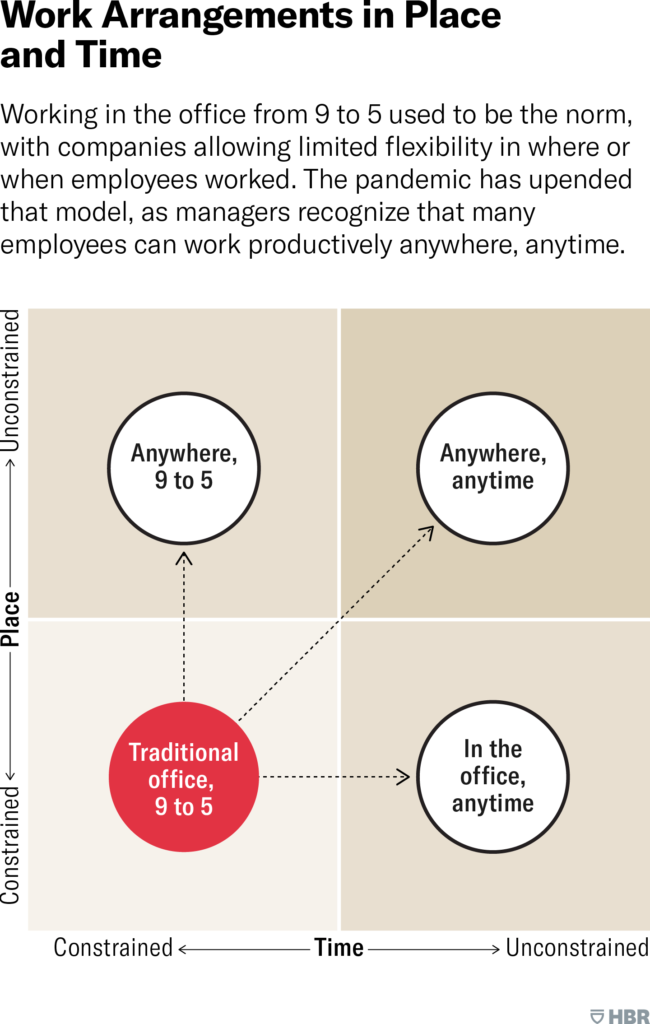
The Time Element (When)
The time element in a hybrid church model allows members to access resources, serve their community, and gather together synchronously with other members or asynchronously whenever they choose.
The Location Element (Where)
This aspect creates the opportunity for members to choose where they meet. The options for gatherings extend far beyond a single meeting space to include online, homes, or any appropriate place.
Understanding the strategy around in-person and online can be dizzying for church leaders, and these two elements alone do not fully embody what it means to be a hybrid church. It’s best to envision both of these elements upon a quadrant because there is room for churches to vary how their local body expresses these elements.
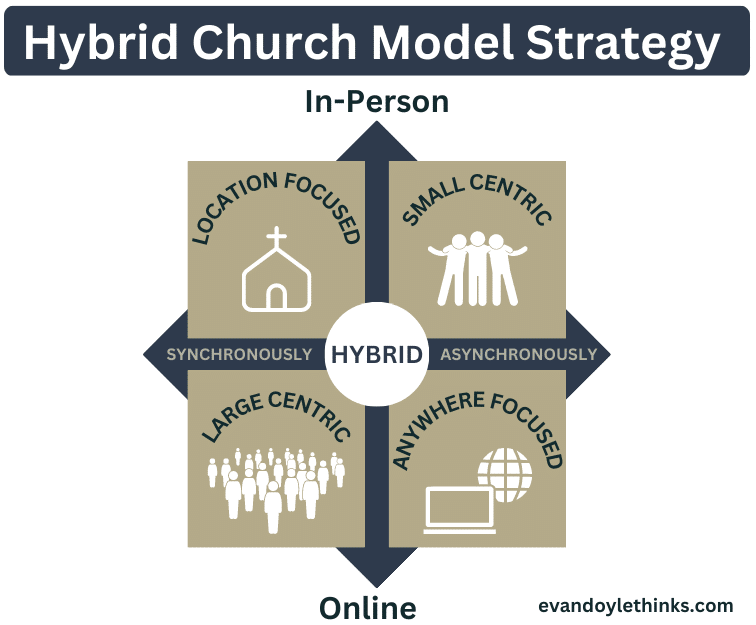
Location-Focused: Members are expected to meet in specific locations during a mostly fixed time. Think Sunday morning service, mid-week service, conferences, and events. This quadrant requires groups of people to meet synchronously within a set location.
Anywhere-Focused: Reach and independence are the primary drivers within the focus. Think social media followings, watching from home, online communities, forums, small groups, house church. This quadrant grants freedom for people to meet asynchronously from anywhere.
Large-Centric: Corporate worship, resource pooling, vision-casting, and experience are central themes of large gatherings of people. This quadrant can expand impact and support networking.
Small-Centric: Discipleship and connectivity can thrive within smaller groups of people. This quadrant can deepen relationships and foster belonging.
Hybrid Church: A truly hybrid church operates with an awareness that each quadrant is vital and possible. Hybrid churches create the structure to support each element without allowing one quadrant to outsize the others disproportionately.
Hybrid churches view dynamics between size, time, and location as paradoxes to flow between rather than deny or abandon.

How To Become A More Hybrid Church
There are several questions to ask to help determine how your church can start implementing a hybrid strategy:
- What are our church’s primary goals and values, and how can a hybrid strategy help us achieve them?
- Based on the Hybrid Church Model, what extremes exist within our church, and how can we reconcile them?
- What are the strengths and weaknesses of our current in-person and online gatherings?
- How are we prioritizing large and small gatherings proportionately?
- How can we create opportunities for members to connect and build relationships both in-person and online?
- What technology and resources must we invest in to support a hybrid model?
- What values and beliefs must our leaders adopt to support a hybrid model wholeheartedly?
If churches ask the right questions, they can identify their strengths and weaknesses, reconcile extremes, and prioritize their goals to create a balanced approach.
Hybrid churches can leverage the benefits of in-person meetings and online platforms, large and small gatherings, and flexibility to meet the needs of their members and communities. By investing in resources and adopting a mindset that values adaptability, churches can create a dynamic and sustainable model for the future.

Best Practices For Hybrid Church Environments
- Prioritize Relationships
- Consistently Emphasize Why A Hybrid Vision Matters
- Adopt Both/And Thinking
- Leverage Technology
- Practice Digital Ministry
- Measure And Assess Results
Church leaders must stay flexible and open-minded as they navigate the challenges and opportunities of a hybrid strategy. Committing to these best practices, churches can create a strong foundation for a thriving hybrid ministry that impacts their local community and the broader world.
Next Steps For Pastors Who Want To Lead A Hybrid Church
The opportunity for churches to function with greater nuance among the dynamics between time, location, and size has never been greater. Throughout the ages, church leaders have wrestled with the same dichotomies in hopes of reaching people and expanding the kingdom of God.
God used prophets, Jesus used stories, Paul used letters, Luther used the printing press, circuit riders used horses, Billy Graham used television, and pastors used multi-site throughout the first 20 years of the 2000s.
Today, churches can seamlessly navigate between dynamics of time, place, and size by leveraging tools that the world is already familiar with or adapting at a fast pace.
The world has undergone a shift in people’s ability to connect and expectations around how it happens, which has led to the adoption of digital technology, a focus on mental health, and a willingness to embrace paradox.
For pastors who want to lead a hybrid church, it is essential to understand and embrace these changes. Although churches can experiment with hybrid expressions in many ways, successful implementation will require leaders and members to think differently and strategize accordingly.
